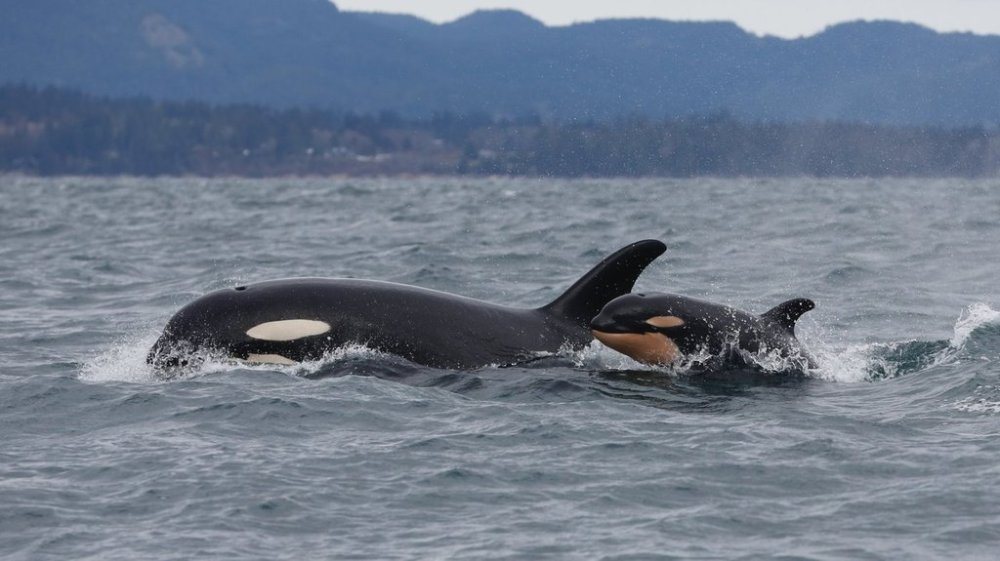Science
Southern Resident Killer Whales Face Decline Without Urgent Action

Recent surveys indicate that the population of endangered southern resident killer whales is experiencing a gradual decline, raising urgent concerns about their long-term survival. According to Michael Weiss, a director with the Center for Whale Research, without stronger protective measures, the whales face a significant risk of disappearing. The survey results reveal a troubling plateau in their numbers, with only 74 individuals counted as of July 1, 2025, an increase of just one from the previous year.
Weiss attributes this decline to several factors, including the diminishing availability of chinook salmon, increasing pollutants, and the noise generated by cruise ships, tankers, and freighters in their coastal habitat, primarily off the shores of Washington State and British Columbia. He states, “We’re not talking about southern residents going extinct in the next five years, but we are talking about a fairly good chance of at least one of the three pods being gone within the next 50 years.”
The annual survey released on October 13, 2025, highlights the precarious state of these whales. During the census, researchers noted four births among the three distinct pods, but only two calves survived. Additionally, the disappearance of an adult male from K pod, known as K26, is seen as a significant loss. Weiss describes the situation as critical, especially as the population suffers from low genetic diversity due to its small size.
In terms of reproductive success, the survey indicates that there are 27 males of reproductive age, but fewer are actively breeding. The youngest confirmed male to have reproduced was just 15 years old, with Weiss suggesting that the prime reproductive age for southern resident males is in their early 20s. The loss of K26, the oldest male of its pod, further exacerbates the genetic challenges facing the population.
While the female killer whales are reproducing, their success rate is significantly lower than that of their northern resident counterparts. Weiss reports that southern resident females reproduce at approximately half the rate of the northern residents. Moreover, calf mortality rates are alarmingly high, with about 50 percent of calves not surviving their first year of life.
The survey data shows that K pod is particularly endangered, numbering only 14 members, which ties for the lowest recorded in the past 50 years. “What’s really concerning about K pod is they’re just not reproducing,” Weiss explains. The last successful birth in K pod occurred in 2022, and prior to that, there had been a decade-long gap.
In contrast, J pod is experiencing a slight increase, benefiting from a lower mortality rate among adults in recent years. However, Weiss cautions that this situation could change rapidly. The survey also revealed that just 11 immature whales, those younger than 10, comprise only 15 percent of the southern residents’ population, a stark contrast to the northern resident population, where immature whales account for 47 percent.
The challenges facing the southern residents are compounded by their reliance on chinook salmon, which has been declining. Weiss notes that the southern residents often get the “last crack” at these salmon, which migrate from northern waters to rivers along the Pacific coast. “These salmon are going through fishing fleets and other killer whale populations, and it’s the southern residents that are kind of getting the last bit of it,” he adds.
To support the recovery of the southern resident killer whales, Weiss emphasizes the need for restoring salmon habitat and adjusting fishing practices. He points out that fishery operations in the ocean often make it difficult to avoid impacting these vulnerable populations. The urbanized environment of their habitat further complicates their situation, as the whales attempt to hunt in waters frequented by large vessels.
As the plight of the southern resident killer whales continues to unfold, conservation efforts will need to intensify to safeguard their future. The combination of habitat restoration, fisheries management, and pollution reduction will be essential to ensure that these iconic marine mammals do not fade into history. The ongoing struggle of these whales serves as a stark reminder of the broader challenges facing marine ecosystems in an increasingly industrialized world.
-

 Politics4 weeks ago
Politics4 weeks agoSecwepemc First Nation Seeks Aboriginal Title Over Kamloops Area
-

 World5 months ago
World5 months agoScientists Unearth Ancient Antarctic Ice to Unlock Climate Secrets
-

 Entertainment5 months ago
Entertainment5 months agoTrump and McCormick to Announce $70 Billion Energy Investments
-

 Science5 months ago
Science5 months agoFour Astronauts Return to Earth After International Space Station Mission
-

 Lifestyle5 months ago
Lifestyle5 months agoTransLink Launches Food Truck Program to Boost Revenue in Vancouver
-

 Technology3 months ago
Technology3 months agoApple Notes Enhances Functionality with Markdown Support in macOS 26
-

 Lifestyle3 months ago
Lifestyle3 months agoManitoba’s Burger Champion Shines Again Amid Dining Innovations
-

 Top Stories2 months ago
Top Stories2 months agoUrgent Update: Fatal Crash on Highway 99 Claims Life of Pitt Meadows Man
-

 Politics4 months ago
Politics4 months agoUkrainian Tennis Star Elina Svitolina Faces Death Threats Online
-

 Sports5 months ago
Sports5 months agoSearch Underway for Missing Hunter Amid Hokkaido Bear Emergency
-

 Politics5 months ago
Politics5 months agoCarney Engages First Nations Leaders at Development Law Summit
-

 Technology5 months ago
Technology5 months agoFrosthaven Launches Early Access on July 31, 2025




















